12 Best Places for Epic Views of Mount Hood (In and Around Mt. Hood National Forest)
One of the most famous natural landmarks in the Pacific Northwest, Mount Hood is the tallest mountain in Oregon. A dormant stratovolcano rising up to 11,239 feet above sea level, this majestic mountain is visible from viewpoints, trails, parks and roads all throughout the region.
A popular year-round destination, Mount Hood is home to no fewer than six ski areas and has the longest ski season in the entire United States.
In summer and fall, the mountain is a paradise for hikers, anglers, boaters, campers, mountain bikers and other outdoor recreationists.
Having served as a main focal point for Oregon Trail travelers in the 19th century, who bypassed the mountain on the legendary Barlow Road, Mount Hood now attracts people on day trips from Portland, out-of-state visitors and international tourists alike.
Many come to immerse themselves in the spectacular scenery at and around Mount Hood. This includes hiking at Mount Hood, exploring vibrant nearby towns like Hood River, and enjoying the stunning views of Mount Hood itself.
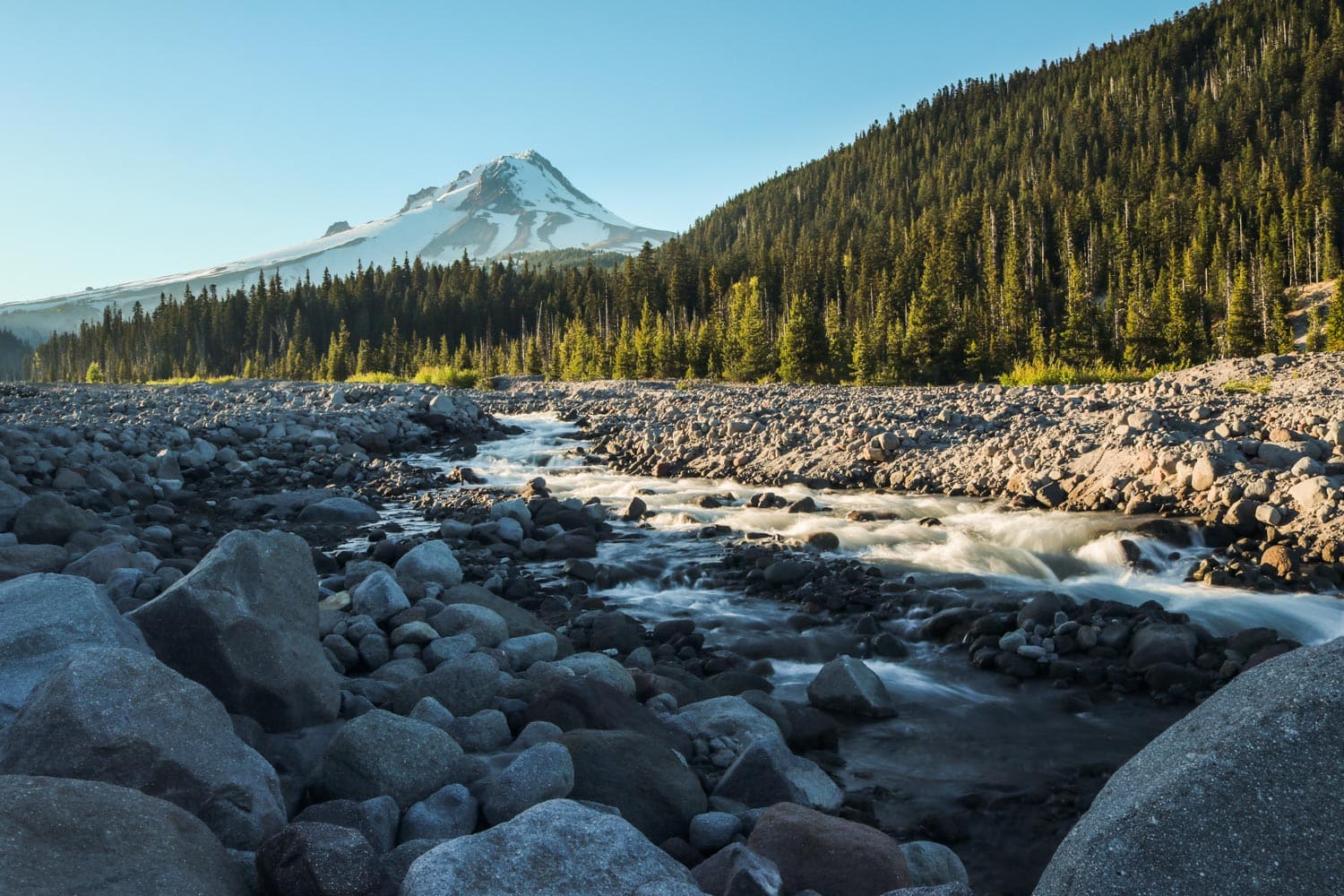
This post about the best places to see Mount Hood contains affiliate links. You can read more about our Terms of Use / Disclosure here.
12 Best Places to See Mount Hood in Oregon
There are numerous great places to see Mount Hood in the region. Below, you’ll find an overview of the best ones.
They are divided into Mount Hood views within Mt. Hood National Forest and viewpoints where you can see Mount Hood from further away (in nearby towns and cities).
6 Spectacular Views of Mount Hood (Within Mt. Hood National Forest)
Mount Hood is only 70 miles east of Portland, Oregon, reachable via two different routes. You can take I-84 east through the beautiful Columbia River Gorge or head southeast on Highway 26.
Both routes will bring you to the Mt. Hood Scenic Byway. This is the main road through Mt. Hood National Forest and offers access to trailheads, lakes, lodges and spur roads.
Most of the best views of Mount Hood within the mountain’s namesake national forest are from hiking trails. Some, however, don’t require much more than driving up to a lakeshore or historic lodge.
Seeing Mount Hood up close in Mt. Hood National Forest is, in other words, something everyone can enjoy.
Timberline Lodge
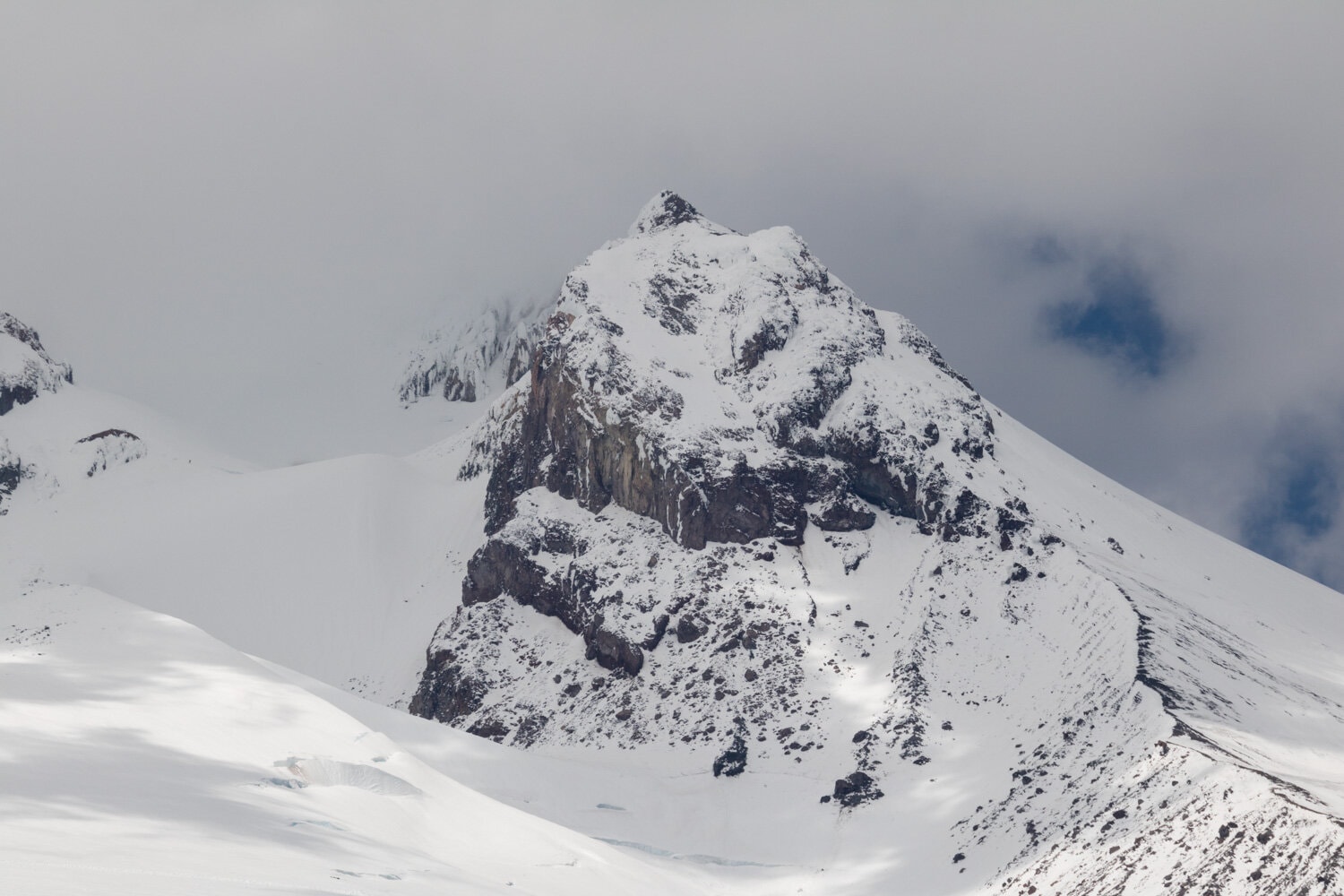
Arguably the most famous historic landmark at Mount Hood, the Timberline Lodge sits high on the south slope of the mountain. Dedicated in 1937 by President Franklin D. Roosevelt, it’s one of the grandest historic mountain hotels in the United States.
The Timberline Lodge has its own ski resort, which is open ten months of the year and has the longest ski season anywhere in the country. It’s usually closed only in September and October.
In summer and early fall, a variety of trails radiate away from the lodge, taking visitors across the meadows, to viewpoint and deep into the backcountry wilderness. Both the Timberline Trail and Pacific Crest Trail pass by the Timberline Lodge.
This is easily one of the best places to see Mount Hood, simply because it’s accessible by car and it’s literally on the mountain itself. The imposing peak of Mount Hood rises majestically behind the lodge, an awesome view you won’t soon forget.
Tom, Dick and Harry Mountain
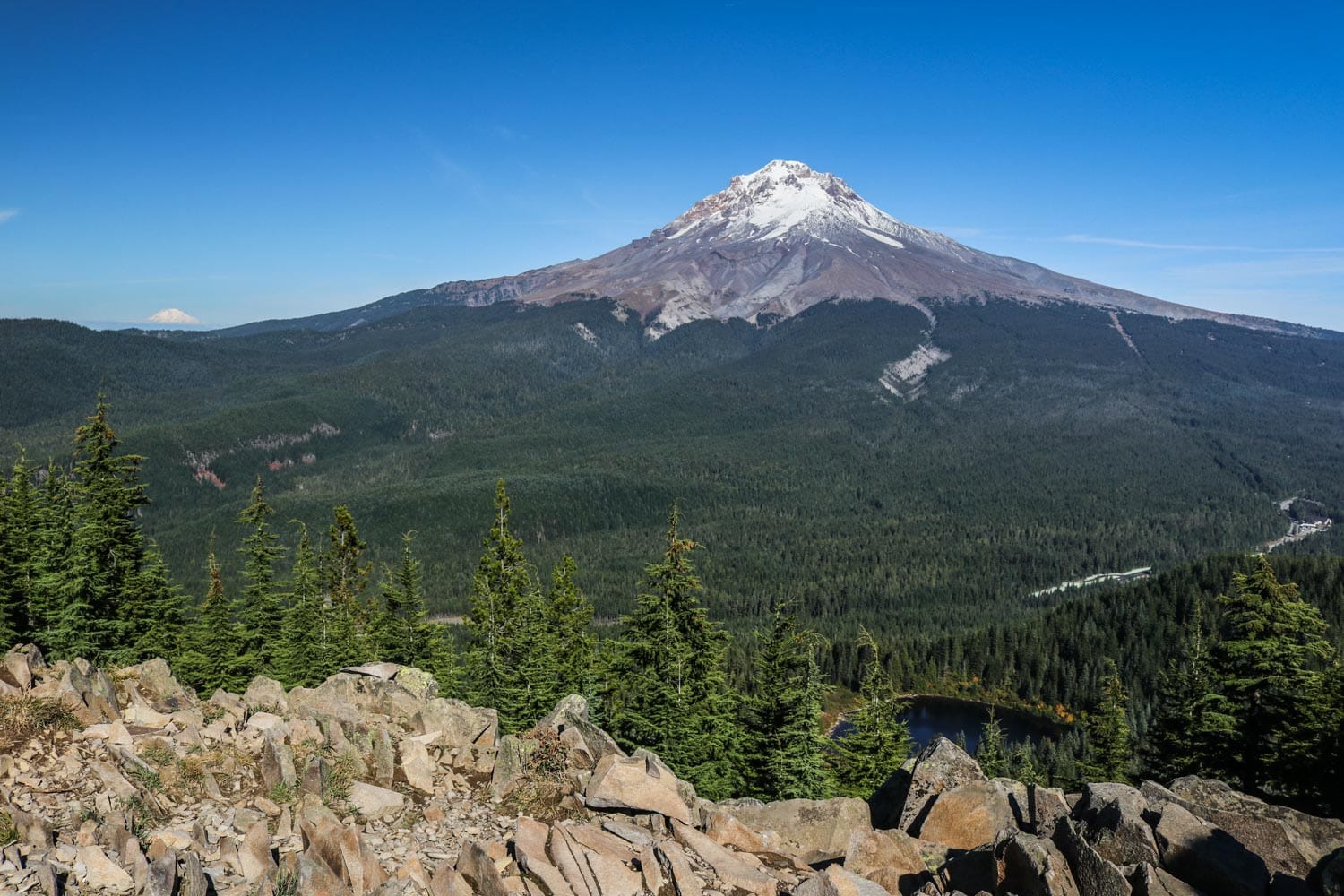
The trail to Tom, Dick and Harry Mountain starts just west of Government Camp at the Mirror Lake Trailhead.
As the trailhead’s name suggests, you’ll pass by scenic Mirror Lake on the way. On clear days, there’s usually a beautiful reflection of the peak of Mount Hood in the water.
Beyond Mirror Lake, the trail climbs gradually to the cliffs of Tom, Dick and Harry Mountain. It’s 4.5 miles one-way.
An ancient two-mile-long volcanic mountain with three summits—Tom, Dick and Harry—this is one of the best places to see Mount Hood in all its glory.
From one of the summits, Mount Hood towers before you to the north, while you can also clearly see Mount Adams, Mount St. Helens and Mount Rainier in the distance. Don’t forget to look behind you, too, for distant views of Mount Jefferson.
Elk Meadows
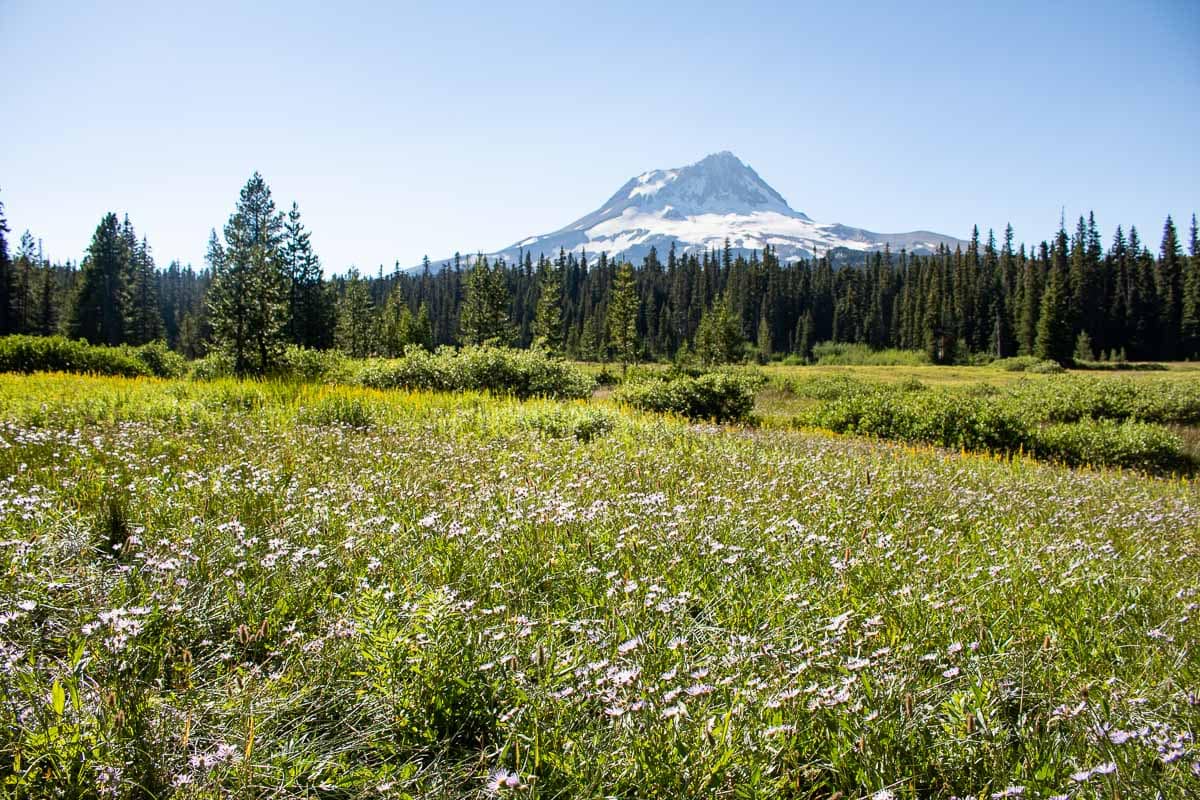
A remote and less-visited area on the east side of Mount Hood, Elk Meadows is an incredible spot for unique views of Mount Hood.
In July, this is one of the best places to enjoy wildflowers in Mt. Hood National Forest, the meadows filled with lupines, paintbrushes, beargrass, Cascade asters and numerous other flowers.
In other months too, however, Elk Meadows is magnificent. From the north and east side of the meadows, you can clearly see the top of Mount Hood towering above the trees.
This landscape of wildflowers and grasses fringed by trees and with a glacier-covered mountain in the background is as scenic as it gets.
You can get to Elk Meadows via a 2.5-mile trail, which starts at the Elk Meadows and Sahalie Falls Trailhead off of OR-35.
Trillium Lake
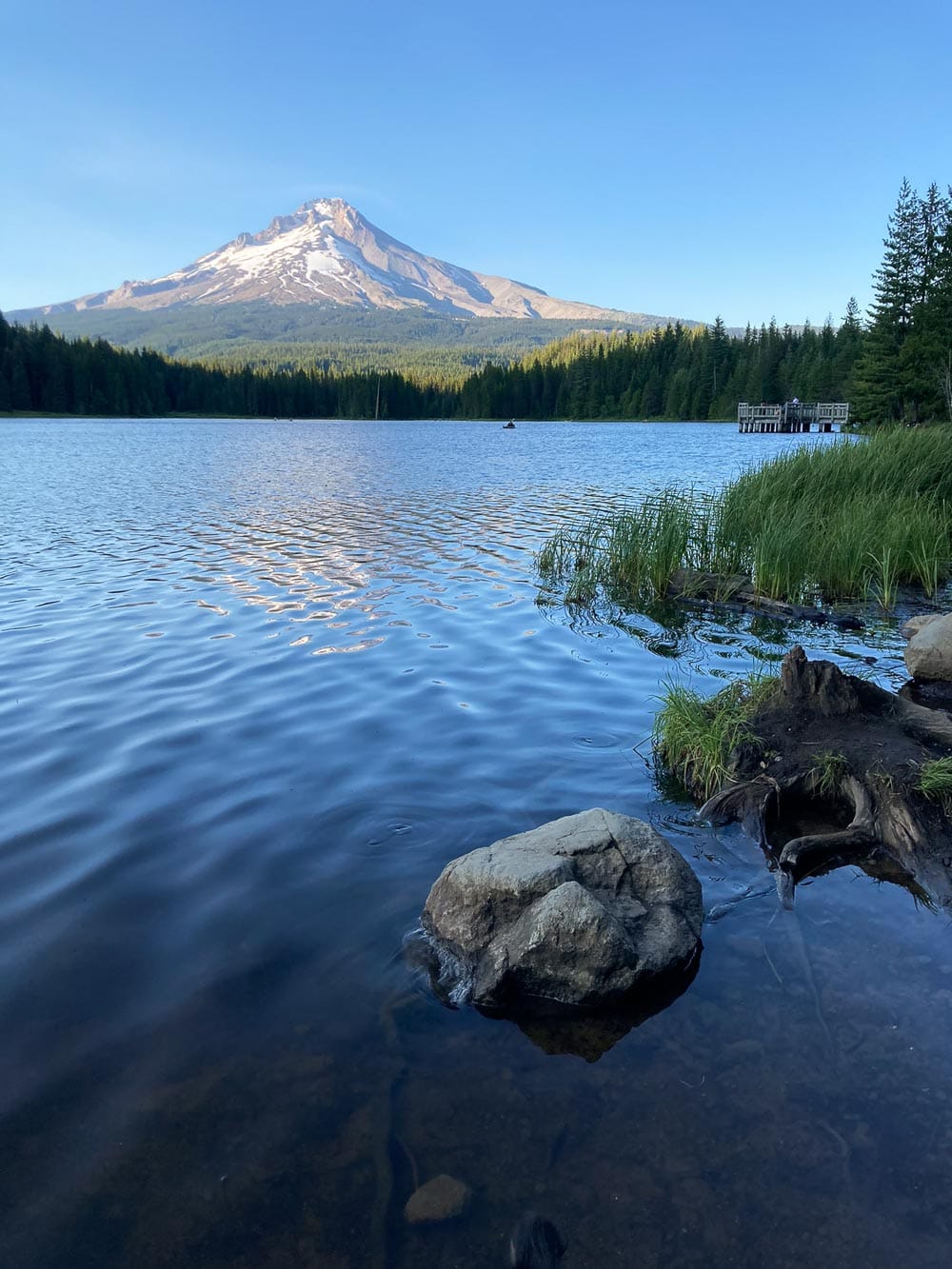
Reachable by car, Trillium Lake is a popular day-use area and campground to the south of Mount Hood, off of Highway 26 near Government Camp.
Created by a dam at the headwaters of Mud Creek, this picturesque lake is famous for its stunning Mount Hood views, great boating opportunities and wonderful loop trail.
Trillium Lake is particularly photogenic at dawn, when its still waters reflect Mount Hood beautifully. Alternatively, this is also a pretty great spot at sunset. Take a seat on the lakeshore and watch the peak of Mount Hood turn orange and pink.
McNeil Point
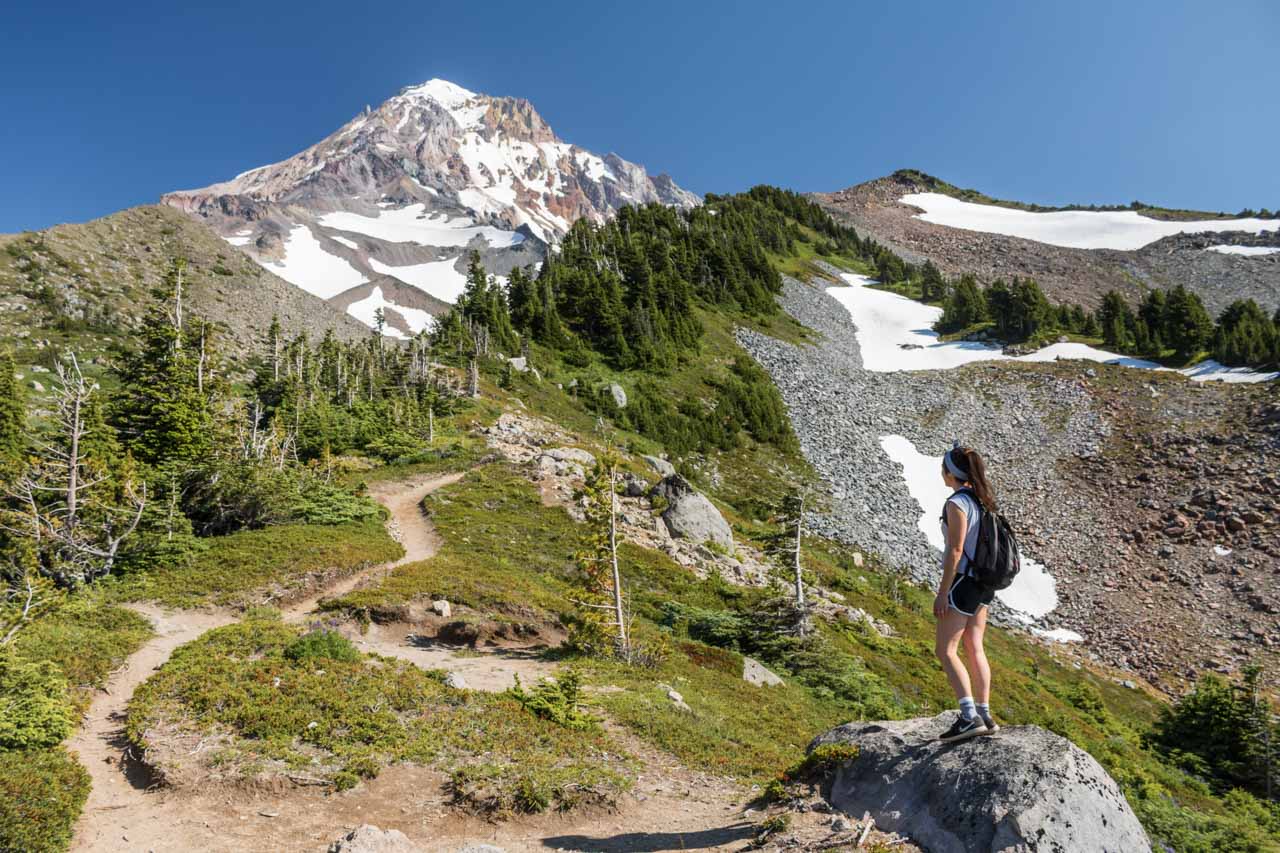
One of the most spectacular day hikes in Mt. Hood National Forest, the McNeil Point Trail runs across meadows, through forests and along ridges. It ends at the historic McNeil Point Shelter on the northwest flank of Mount Hood.
It’s about 5.2 miles one-way from the Top Spur Trailhead to McNeil Point, a challenging hike in a remote part of the national forest.
Once you get above the tree line, the views are sensational. Mount Hood towers directly to the southeast, while the Bull Run Watershed extends to the west.
Wildflowers bloom in meadows all around you. Listen for the whistles of marmots and pikas, keep your eyes peeled for black bears. (Learn what to do when encountering a black bear here.)
White River West Sno-Park
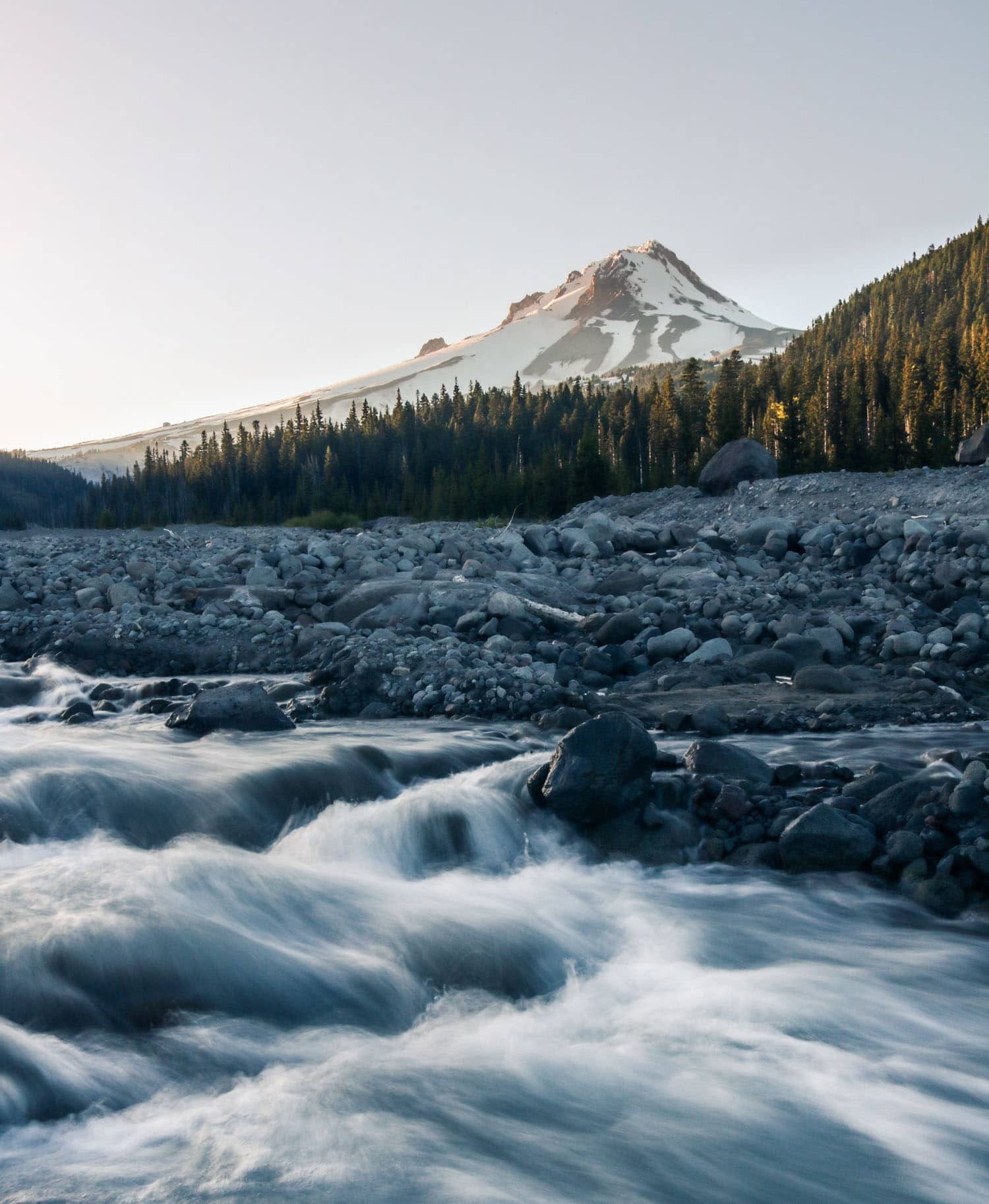
Located on OR-35 on the east side of Mount Hood, the White River West Sno-Park is a large parking lot that offers access to a number of ski trails in winter.
Mount Hood dominates the backdrop here, standing tall above the trees along the White River. This spot is especially beautiful in late spring, when runoff from melting snow on Mount Hood fills the river.
The rushing water of the river, backed by mighty Mount Hood and lit up by warm late-evening sunrays, is one of my favorite views at Mount Hood.
6 Other Scenic Views of Mount Hood (Outside of Mt. Hood National Forest)
In addition to the spectacular Mount Hood views in Mt. Hood National Forest above, there are several others in nearby communities and towns.
In Portland, the nearest major city to Mount Hood, there are a couple of truly spectacular viewpoints offering unobstructed views of Mount Hood (as well as Mount St. Helens).
A bit closer to the mountain itself, you can see Mount Hood from viewpoints in towns like Sandy, Hood River and Parkdale.
Panorama Point County Park
Location: Hood River, Oregon

Located south of downtown Hood River, Panorama Point County Park is a popular place for views of Mount Hood, Mount Adams and the orchards of the scenic Hood River Valley. It’s especially beautiful in spring when all the fruit trees are in bloom.
This small park has a parking lot, restrooms and picnic tables, and is also handicap-accessible. Interpretive signs provide more information about the geological history of the Hood River Valley that extends below.
Solera Brewery
Location: Parkdale, Oregon
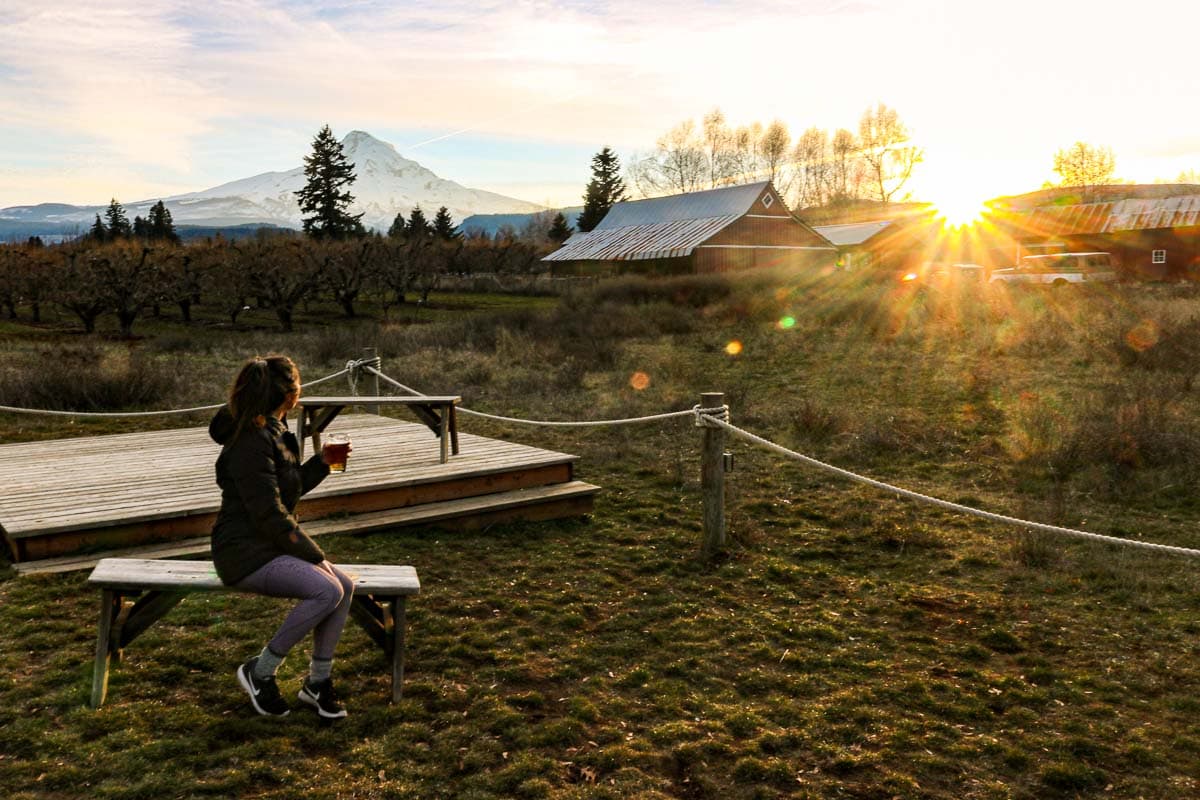
If you’re looking for an Oregon brewery with breathtaking views, few can compete with Solera Brewery in Parkdale. Located just northeast of the Mt. Hood National Forest boundary, this small brewery has an inviting backyard with a sensational view of Mount Hood.
It’s one of our favorite places to grab a beer or two after day hiking at Mt. Hood.
Jonsrud Viewpoint
Location: Sandy, Oregon
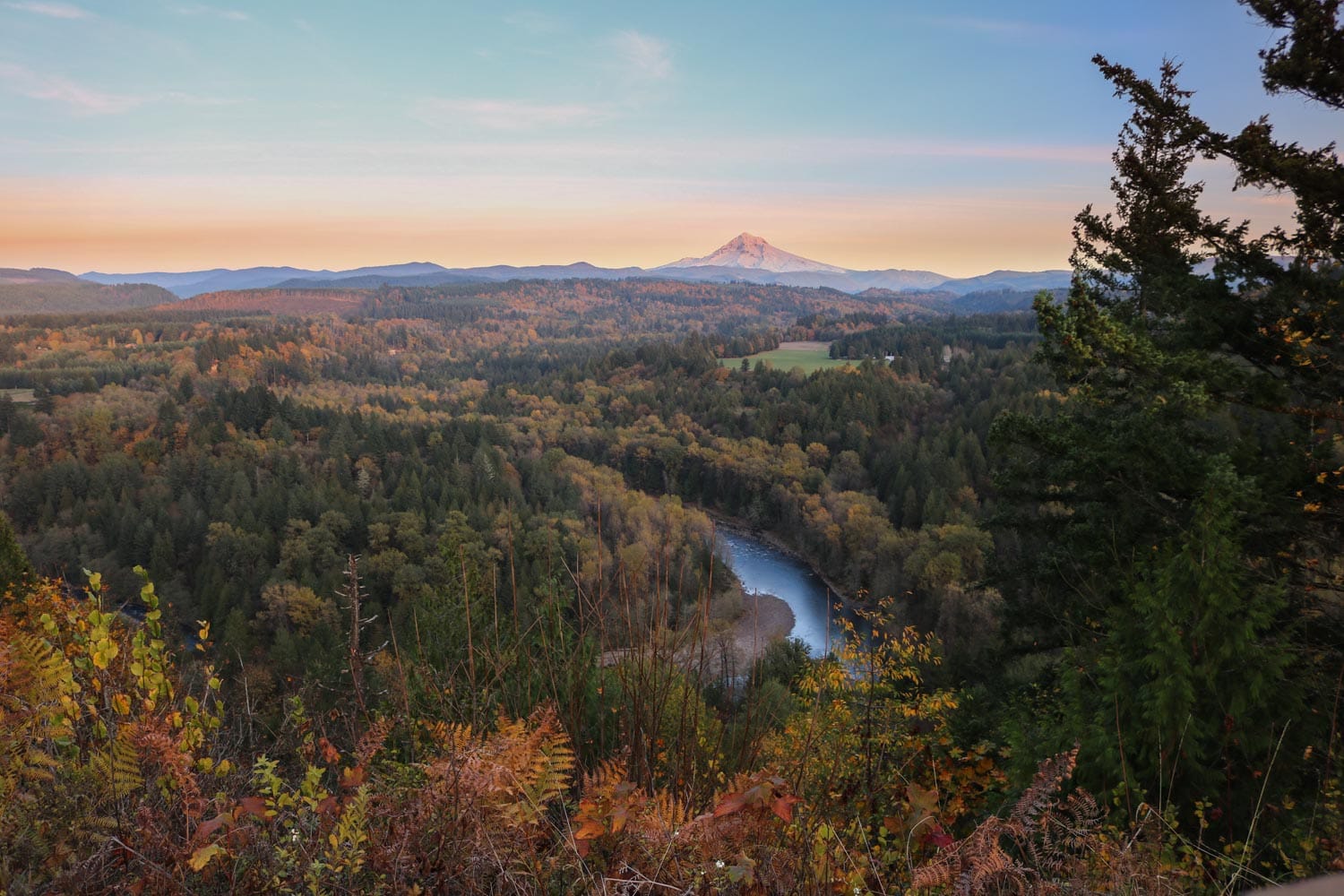
Sometimes called “one of the best views of Mount Hood in Oregon,” the Jonsrud Viewpoint in Sandy offers sensational views of the Sandy River backed by Oregon’s highest mountain.
This small park has brick walking paths, telescopes and information about the historic Barlow Road. It is situated on Bluff Road, just north of Highway 26 in Sandy.
Rocky Butte
Location: Portland, Oregon
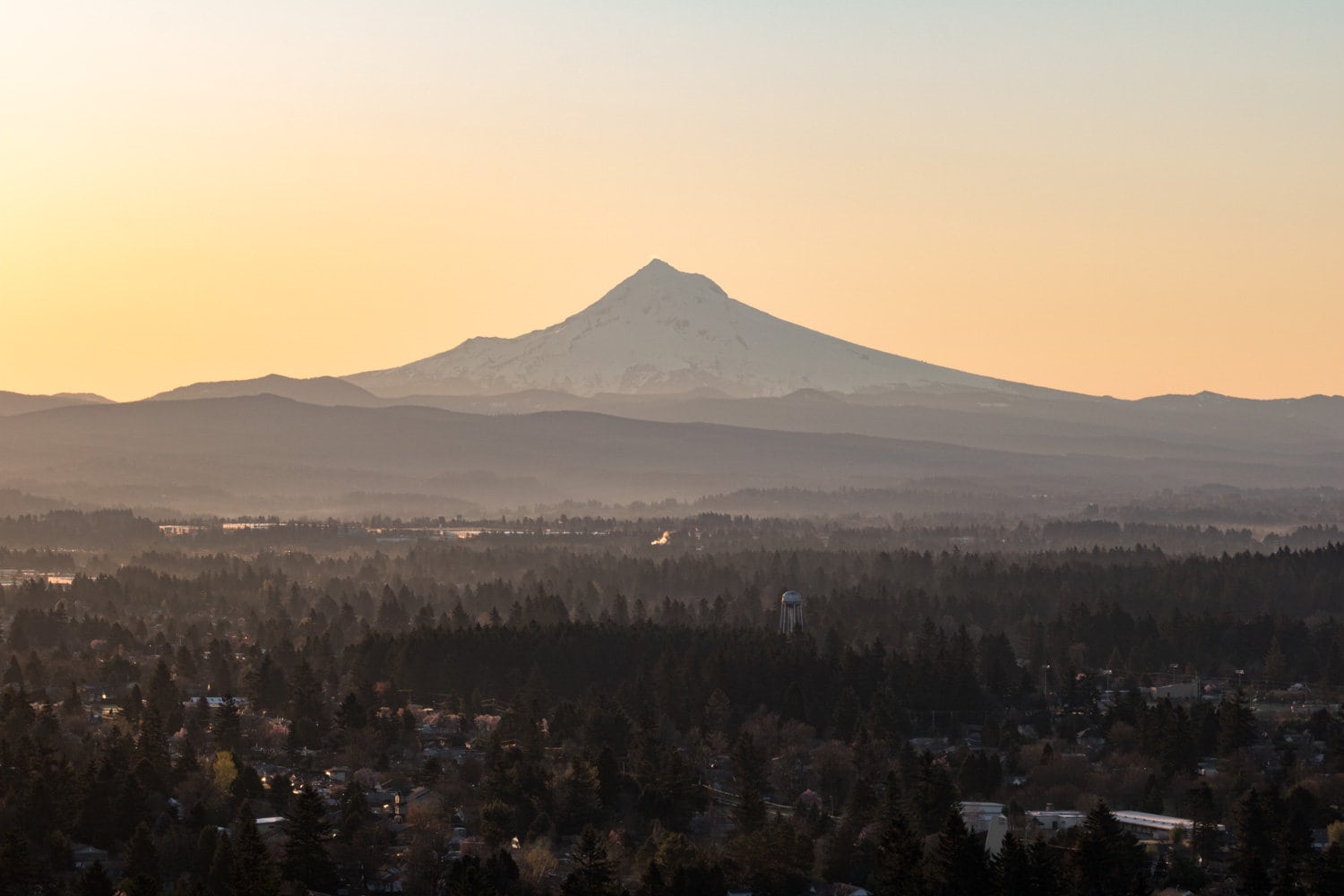
An extinct volcanic cinder cone in East Portland, Rocky Butte is home to a tiny park at its top. A road winds its way to the summit, ending at Joseph Wood Hill Park where stone steps lead up to a panoramic viewing area.
This is a great place to watch the sunrise or sunset in Portland, the vista taking in Mount Hood, Mount St. Helens and the Portland Airport. (It’s a superb spot to watch planes land and take off, backed by the mighty dome of Mount St. Helens.)
Pittock Mansion
Location: Portland, Oregon
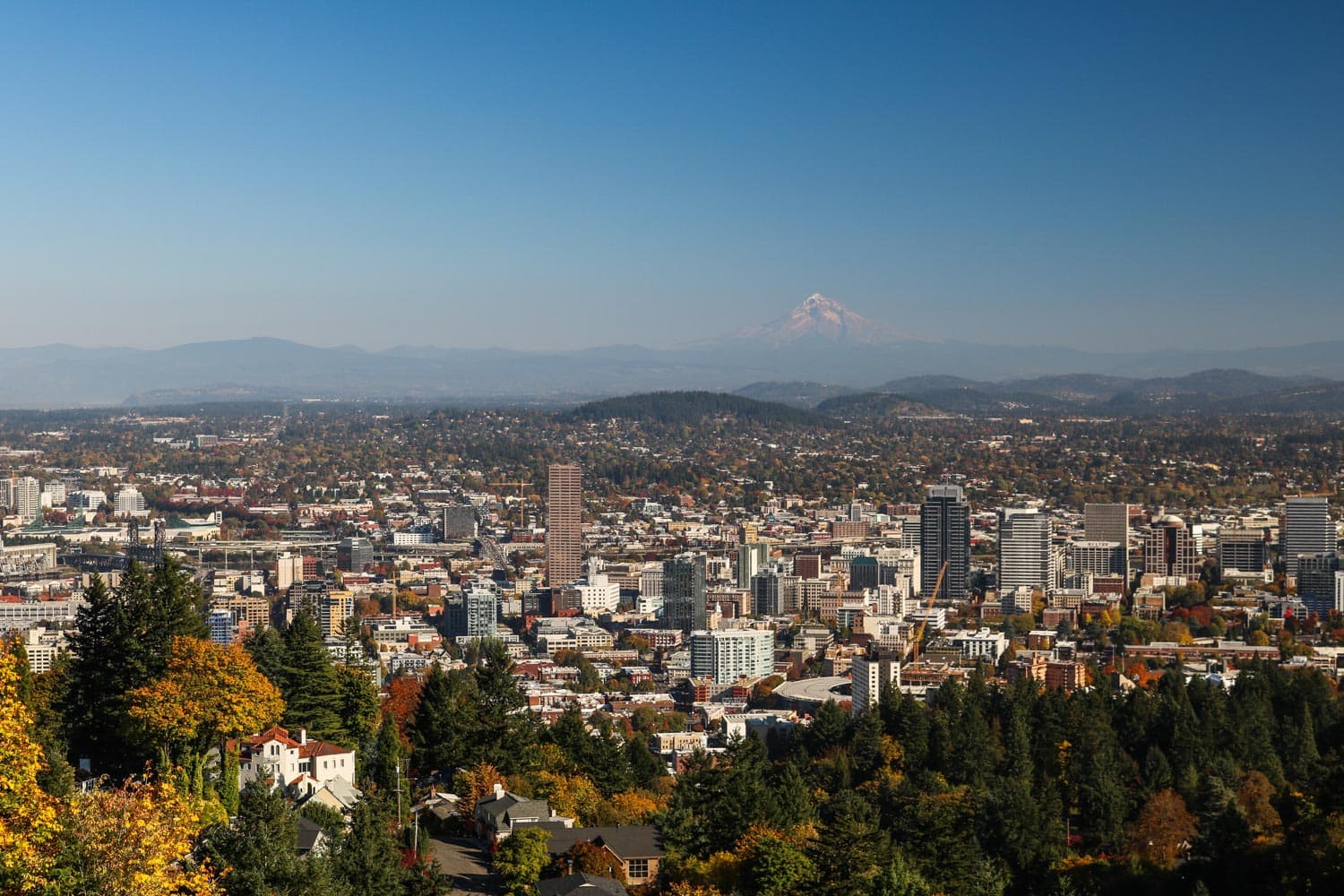
One of Portland’s greatest architectural and historic attractions is Pittock Mansion. Located in the West Hills, just south of Forest Park, this mansion dates from 1914 and was the home of Oregonian publisher Henry Pittock and his wife, Georgiana Burton Pittock.
In addition to the huge mansion, the estate also encompasses beautiful gardens and a scenic overlook.
At the overlook, there’s a jaw-dropping view of the city of Portland with Mount Hood and Mount St. Helens rising up from the landscape beyond.
Powell Butte Nature Park
Location: Portland, Oregon
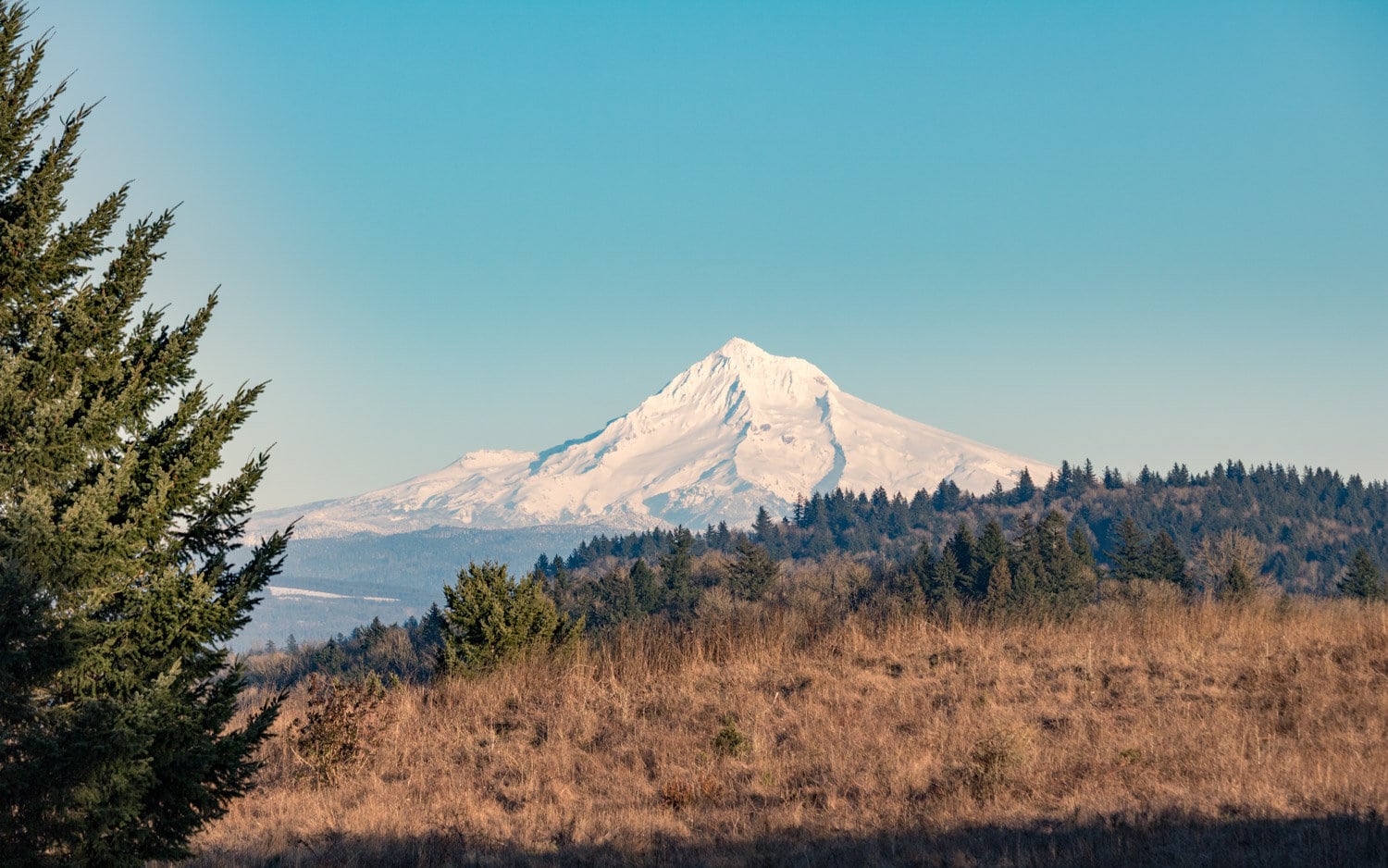
Part of the Boring Lava Field of ancient volcanic features and lava flows, Powell Butte is an extinct cinder cone in southeast Portland.
The butte is the centerpiece of a sprawling nature park home to meadows, forests and historic orchards. There’s an extensive network of trails in the park, accommodating hikers, mountain bikers and horseback riders.
At the top of Powell Butte, an orientation platform provides panoramic views of the region, taking in Mount St. Helens and, of course, iconic Mount Hood.
More Content About Oregon’s Parks and Forests
- Top Things to Do in Deschutes National Forest, Oregon
- Best Views of Crater Lake
- Top 13 Coolest State Parks in Oregon
- 7 Must-Visit National Parks Near Portland, Oregon
- Best Wildflower Hikes in the Columbia River Gorge






